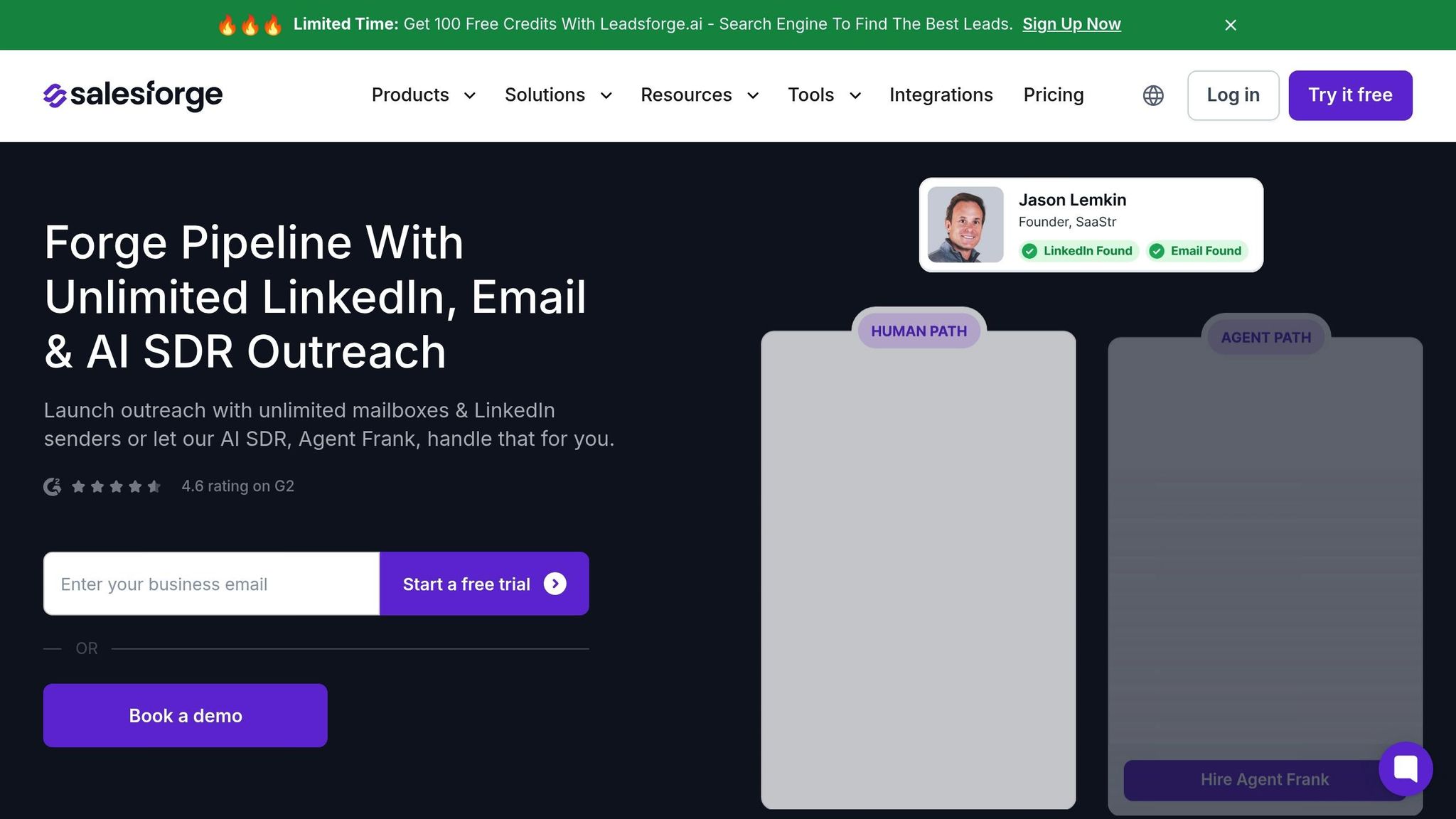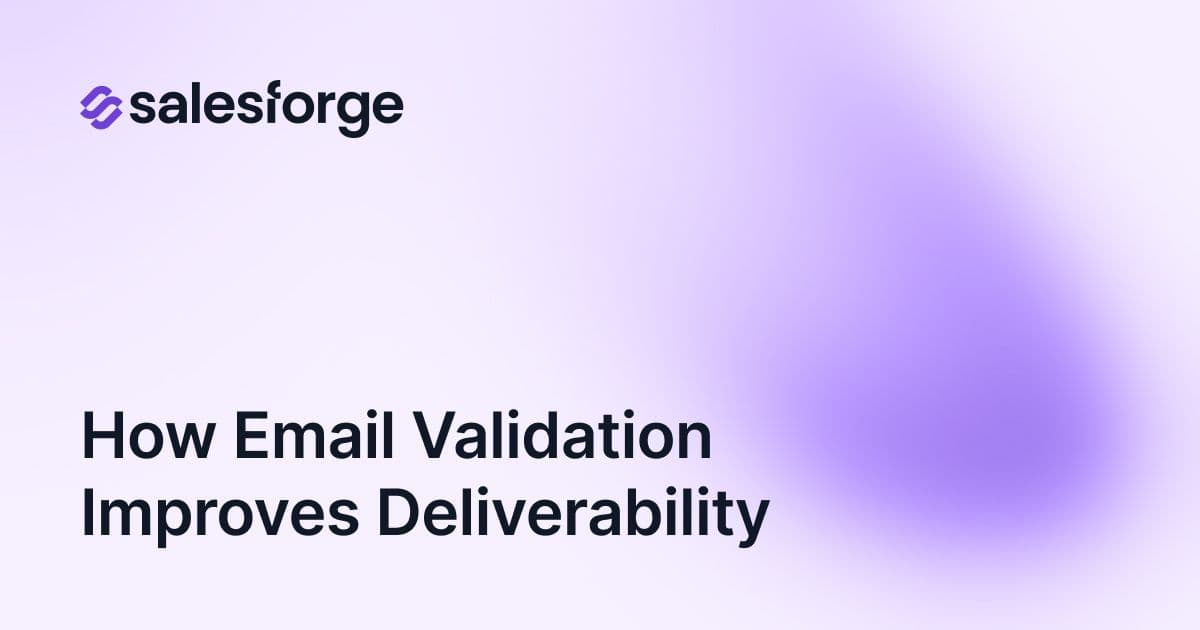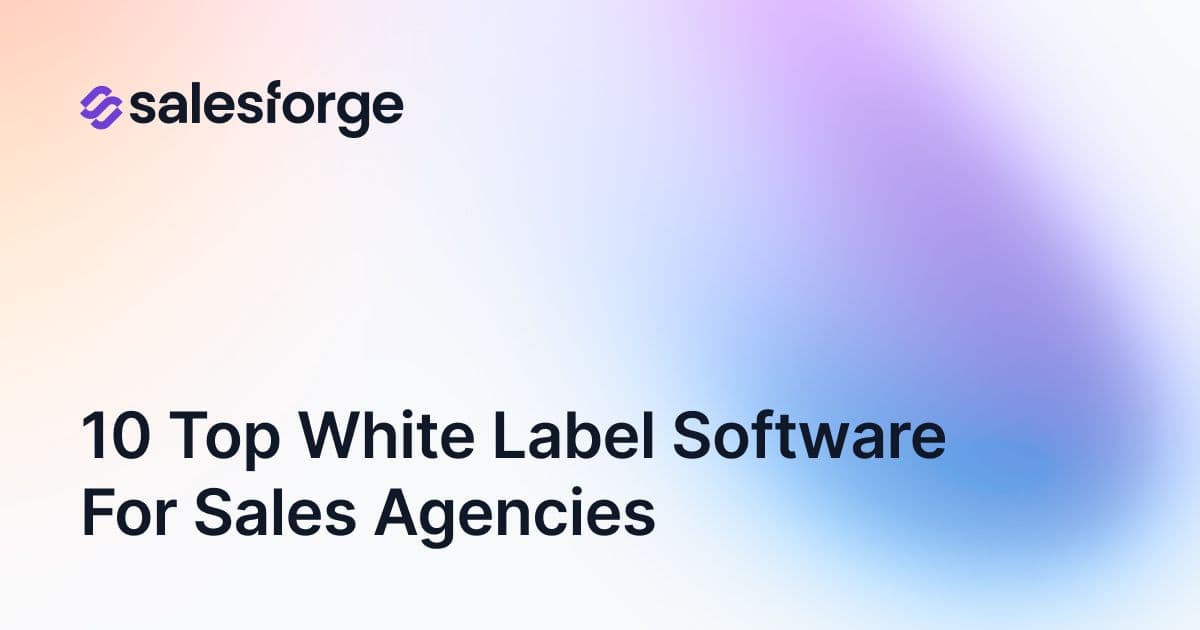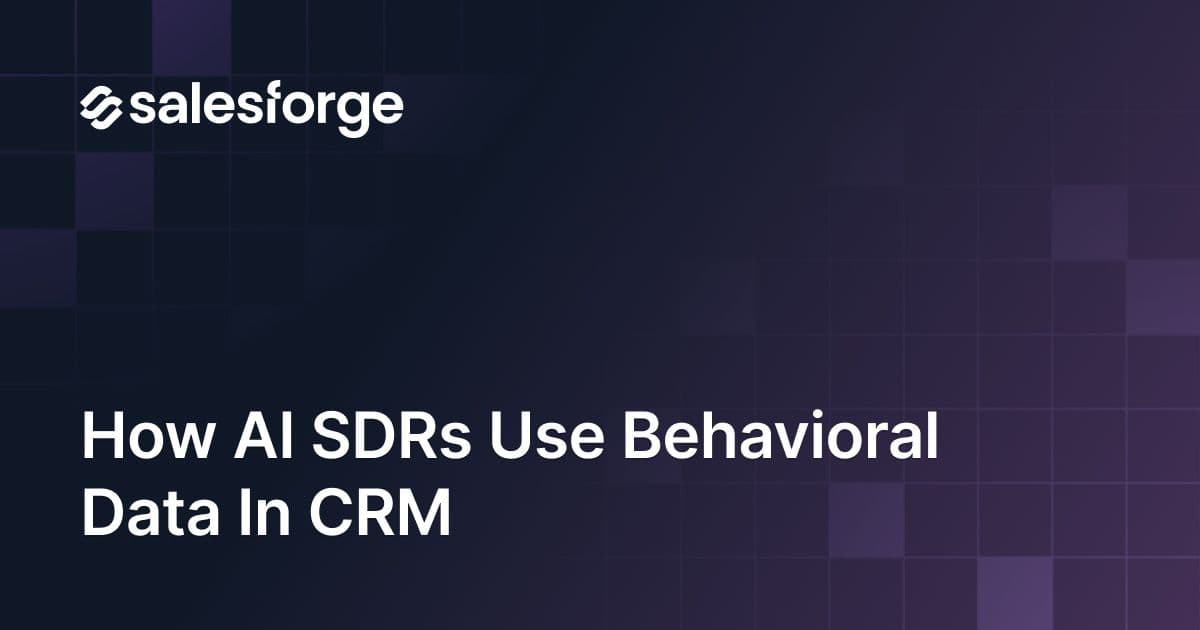How Email Validation Improves Deliverability
Email validation is the backbone of successful email campaigns. It ensures your messages reach real, active inboxes, reducing bounce rates and improving sender reputation. Without validation, emails risk landing in spam folders or being blocked entirely. Here's why email validation matters:
- Reduces Bounces: Invalid emails lead to high bounce rates, harming your sender reputation.
- Protects Sender Reputation: Poor reputation can cause even valid emails to be flagged as spam.
- Boosts Deliverability: Validated lists can achieve deliverability rates of up to 98%.
- Increases Engagement: Verified contacts are more likely to open, read, and respond to your emails.
Key Steps in Email Validation:
- Syntax Check: Ensures proper email formatting.
- Domain Verification: Confirms the domain exists and can receive emails.
- Mailbox Validation: Checks if the specific mailbox is active.
- Spam Trap Detection: Identifies risky addresses that harm reputation.
Regular validation is crucial as email addresses decay yearly (22.5% on average). Tools like Salesforge and Scrubby streamline the process, combining validation with outreach features to maximize results. To maintain strong deliverability, validate your list frequently, keep bounce rates below 2%, and aim for 98–99% deliverability. These practices safeguard your campaigns and improve overall performance.
How Email Validation Works
Email validation systematically checks each email address to ensure it’s valid and can receive messages. This process is essential for keeping your email lists clean and safeguarding your sender reputation.
Core Steps in Email Validation
The process begins with syntax validation, which ensures the email address follows proper formatting rules. It checks for the presence of an "@" symbol, a valid domain extension like .com or .net, and avoids prohibited characters. Think of this as a grammar check for email addresses.
Next is domain validation, which verifies that the domain part of the address exists and is set up to receive emails. This step involves querying DNS records to confirm the domain is active and has the necessary MX records in place, helping avoid emails sent to non-existent domains.
Mailbox availability checks go a step further by connecting via SMTP to confirm the specific mailbox exists.
Lastly, spam trap detection identifies risky addresses that could harm your sender reputation. These include pristine traps (addresses never used by real people) and recycled traps (old, abandoned addresses repurposed by ISPs and anti-spam organizations).
Advanced Validation Techniques
Beyond the basics, advanced validation methods help refine your email lists even more. For instance, risk scoring evaluates each email address and assigns a risk level based on various factors. This helps you decide which addresses to keep and which may pose deliverability issues.
Catch-all domain detection identifies domains that accept all emails, even if specific mailboxes don’t exist. While these addresses might not bounce initially, they often lead to poor engagement since many aren’t actively monitored.
Validation also flags disposable and role-based email addresses. Disposable emails are temporary and expire quickly, while role-based emails (like info@ or support@) rarely reach decision-makers. Filtering these out improves the likelihood of connecting with real prospects.
The Importance of Regular Validation
Email addresses naturally decay over time, with an average annual decay rate of about 22.5%. People change jobs, companies shut down email accounts, and domains expire, turning previously valid addresses into risks for bounces.
Failing to maintain list hygiene can lead to higher bounce rates and spam trap hits, which damage your sender reputation. Over time, this can result in even valid emails landing in spam folders, making it harder to reach your audience.
Regular validation ensures your lists stay up-to-date and aligned with evolving spam filters. By consistently cleaning your lists, you’ll send emails to high-quality addresses, protecting your email infrastructure and improving the success of your campaigns.
Platforms like Salesforge make this process seamless by integrating email validation into their outreach workflows. Features like "Verify emails" become a standard part of campaign preparation, boosting deliverability and maximizing ROI. Up next, we’ll break down a step-by-step guide for cleaning your email lists.
How Email Validation Improves Deliverability
Validating your emails is a crucial step in building a strong foundation for successful cold outreach. It helps improve campaign performance by reducing bounce rates, protecting your sender reputation, and increasing engagement. The validation process, as outlined earlier, supports these improvements across all these areas.
Reducing Bounce Rates and Preventing Blacklisting
Hard bounces are a hidden threat to your email deliverability. Sending messages to invalid, outdated, or fake email addresses not only results in bounces but also signals to ISPs that your list hygiene is lacking. If your bounce rate exceeds 2%, spam filters are triggered, and you risk being blacklisted. Email validation helps by removing these problematic addresses, keeping your bounce rate well below that critical threshold.
The stakes are even higher in cold outreach. Spam traps, which are email addresses set up by ISPs to catch senders with poor practices, can severely damage your sender reputation if hit. While these traps may seem legitimate, advanced validation tools can detect and suppress them, safeguarding your domain from future blocks.
Improving Sender Reputation and Inbox Placement
Think of your sender reputation as the credit score of email delivery. ISPs calculate this score based on factors like bounce rates, spam complaints, and engagement metrics. A good reputation ensures your emails land in inboxes rather than spam folders. On the other hand, a poor reputation - caused by high bounce rates and low engagement - can significantly harm your deliverability.
By sending emails only to verified and active addresses, you maintain the low bounce rates and high engagement ISPs prefer. ISPs also monitor recipient behavior, such as opens, clicks, and spam reports, to decide where your future messages will land. Ideally, email deliverability should be at least 85%, with 98–99% being the gold standard.
Platforms like Salesforge excel in this area. As Sam Momani, CEO of LinkedDNA, shared:
"I've used many platforms and no one beats Salesforge on email deliverability and ease of use."
Salesforge achieves this by combining validation with a range of deliverability tools, ensuring a strong sender reputation. This solid foundation enables more meaningful interactions with verified contacts.
Boosting Engagement with Verified Contacts
ISPs are increasingly emphasizing recipient engagement, making verified, reachable contacts more valuable than ever. Sending to confirmed recipients boosts the likelihood that your emails will be opened, read, and acted upon. Regular email validation enhances open rates and reduces spam complaints. For example, tools like Scrubby have reported deliverability rates as high as 98% after thorough validation.
Higher engagement creates a positive feedback loop. When recipients open your emails, click on links, or reply, these actions signal to ISPs that your content is relevant and valuable. This further strengthens your sender reputation and improves inbox placement for future campaigns.
In cold outreach, focusing on verified contacts is essential. It not only protects your deliverability but also maximizes the impact of your campaigns. Carlos Palop Moliner, CEO of UniteSync, summarized it well:
"Cold email only works when it lands. That's where Salesforge has the edge."
Salesforge's approach integrates AI-driven validation with personalized outreach and automated follow-ups, giving your messages the best chance to connect with genuine prospects. Additionally, regular validation helps combat the natural decay of email lists - considering that 22.5% of email addresses become invalid each year, ongoing list cleaning is vital to keep your campaigns running at their best.
Step-by-Step Guide to Cleaning Email Lists
Keeping your email list clean isn’t a one-and-done task - it’s an ongoing effort that plays a big role in the success of your cold outreach. With 22.5% of email addresses becoming invalid each year and deliverability rates needing to stay above 85%, regular maintenance is a must. Here’s how to clean your email lists effectively.
Consolidate and Prepare Your Email List
Start by gathering all your email data into a single, unified database. Combining data from various sources eliminates fragmentation and gives you a full picture of your contacts. Use data management tools to find duplicate entries and flag outdated information. Look out for common issues like domain typos, generic catch-all addresses, or emails that frequently bounce. Fixing these problems early can significantly lower your bounce rate.
Run Email Validation Checks
Once your list is consolidated, it’s time to validate each email to ensure strong deliverability. Automated tools make this process faster and more efficient by checking multiple factors at once. These tools verify syntax, confirm domains and mailboxes, and assign risk scores to weed out spam traps, disposable emails, or addresses prone to complaints.
Marketers who rely on thorough validation tools often see noticeable improvements. For instance, cleaning your list properly can increase open rates by up to 30% and cut down on spam complaints. Tools like Scrubby have achieved 98% deliverability rates when their full validation process is used. These automated systems can process thousands of addresses in minutes, catching errors that manual reviews might overlook. The result? A high-quality list that’s ready to support your outreach efforts.
Reintegrate Cleaned Lists into Outreach Platforms
After validation, the next step is to smoothly reintegrate your cleaned list into your outreach platform. Export the cleaned data - usually as a CSV file - and import it into your system. Platforms like Salesforge make this process seamless, offering features like unlimited email warm-up (via Warmforge) to build sender reputation and mailbox rotation to prevent overuse of a single sending address.
With verified data, tools like Salesforge’s AI can personalize outreach more effectively. To further optimize deliverability, ensure your email authentication protocols (DKIM, DMARC, SPF) are properly configured. Keep an eye on key metrics like bounce rates, open rates, and spam complaints to measure your cleaning efforts’ success. And don’t stop there - regularly revisit and clean your list to maintain strong performance. A well-maintained list not only protects your sender reputation but also boosts the return on your outreach investments.
AI-Powered Solutions for Email Validation
Modern AI tools are reshaping how sales teams handle email validation, going far beyond simple syntax checks to ensure emails actually reach inboxes. These platforms don't just flag invalid addresses - they integrate validation directly into outreach workflows, boosting deliverability and improving campaign success. By combining email verification with advanced deliverability techniques, platforms like Salesforge are setting new standards with fully integrated solutions.
How Salesforge Enhances Email Validation

Salesforge takes email validation to the next level by embedding it directly into its cold outreach platform. It automatically checks for syntax errors, verifies domain validity, and confirms mailbox existence - all before sending an email. This real-time validation works hand-in-hand with AI-driven personalization for every lead, ensuring both the technical and content aspects of deliverability are optimized at the same time.
The platform also includes unlimited warm-up features through Warmforge and rotates multiple mailboxes to protect sender reputation. This dual approach - validation and warm-up - creates a strong foundation for deliverability. By avoiding overuse of any single email address, Salesforge helps maintain high inbox placement rates, a critical factor for successful cold outreach.
UniteSync, for example, achieved an 85.26% positive reply rate and an impressively low $2.86 customer acquisition cost using Salesforge’s integrated tools. Carlos Palop, CEO of UniteSync, highlighted the impact by saying:
"cold email only works when it lands. That's where Salesforge and Mailforge have made the difference".
Comparing Email Validation Platforms
When it comes to email validation, different platforms offer varying features tailored to specific needs. Some, like ZeroBounce and Mailgun, focus solely on validation accuracy, often requiring additional tools to complete the outreach process. Others, like Salesforge, combine validation with broader outreach capabilities, simplifying workflows.
| Platform | Validation Features | Integration Approach | Pricing Model | Unique Advantages |
|---|---|---|---|---|
| Salesforge | Syntax, domain, mailbox + AI tools | Built-in outreach platform | Subscription ($48-96/month) | Unlimited warm-up, AI personalization, mailbox rotation |
| ZeroBounce | Syntax, domain, mailbox, spam traps | API-based integration | Pay-per-validation ($0.008-0.01/email) | Detailed reporting, real-time validation |
| Mailgun | Syntax, domain, mailbox verification | API and email service | Tiered API pricing | Email delivery infrastructure, analytics |
Salesforge’s all-in-one approach offers a cost-effective solution for high-volume teams. Unlike ZeroBounce’s pay-per-validation model, Salesforge includes unlimited validation and warm-up in its subscription plan. This is especially valuable for teams managing thousands of contacts each month. For example, AKOOL reached over 214,000 prospects with a 16%+ positive reply rate using Salesforge’s infrastructure. By bundling essential features, Salesforge simplifies workflows, saving time and money compared to standalone solutions.
The Role of AI SDRs in Deliverability Optimization
Salesforge’s Agent Frank, an AI-powered Sales Development Representative (SDR), represents a leap forward in deliverability management. This AI handles everything from lead generation and email validation to crafting personalized messages and scheduling meetings. By automating validation at every stage, Agent Frank ensures that only verified, engaged contacts are targeted.
The AI doesn’t stop there - it actively monitors deliverability signals, suppresses risky email addresses, and adjusts send times to maximize inbox placement. With these capabilities, Agent Frank minimizes human error and maintains deliverability rates as high as 98%. Plus, it supports outreach in over 20 languages, making it a powerful tool for global campaigns.
What makes Agent Frank especially effective is its ability to learn and adapt. Over time, it becomes better at spotting deliverability risks and adjusting to changes in email provider algorithms and spam detection methods. This constant improvement ensures consistent performance, even as campaigns scale to tens of thousands of contacts each month.
Conclusion: The Impact of Email Validation on Sales Performance
Throughout this guide, we've seen how validated email lists can significantly improve open rates, engagement, and, most importantly, sales performance. By focusing on verified prospects, email validation ensures your outreach efforts are both efficient and effective.
Key Takeaways
Validated email lists deliver real, measurable results. Companies that use advanced validation tools report deliverability rates as high as 98%, a 4X improvement in lead list effectiveness, and even double their revenue growth. Regular validation also helps counteract natural list decay and avoids issues like poor inbox placement.
Here are three major benefits that contribute to these outcomes:
- Lower bounce rates and fewer spam complaints: This protects your campaigns from falling apart and shields your sender reputation from damage, ensuring your emails land where they’re supposed to - your recipients’ inboxes.
- Stronger sender reputation: A better reputation directly improves inbox placement, with top-tier reputations seeing up to a 30% increase in open rates.
- Higher engagement with verified contacts: Reaching the right audience means you get better results from your campaigns, cutting customer acquisition costs while boosting overall effectiveness.
With these advantages in mind, it’s clear that refining your email validation process is a step worth taking.
Next Steps for Optimizing Deliverability
To get started, clean up your email list by removing duplicates and fixing formatting errors. Then, implement automated validation tools to check email syntax, domain accuracy, and mailbox existence before launching your campaigns.
Make validation a regular habit. Depending on your outreach volume and the size of your list, schedule monthly or quarterly validation cycles to keep your data fresh and avoid deliverability problems.
Consider using AI-powered platforms like Salesforge for a seamless experience. These tools combine validation with advanced outreach features, such as unlimited email warm-up through Warmforge, AI-driven personalization, and automated deliverability tracking. They take the hassle out of manual list management while helping you achieve higher inbox placement rates.
Finally, keep an eye on your deliverability metrics. Aim to maintain bounce rates below 2%, complaint rates under 0.01%, and deliverability rates in the 98-99% range for peak performance. Adjust your strategies based on these insights to ensure your campaigns continue to thrive.
FAQs
How often should I validate my email list to maintain a strong sender reputation?
Regularly checking the validity of your email list is key to safeguarding your sender reputation and achieving strong deliverability rates. Ideally, you should verify your list before launching a new campaign, especially if it contains new leads or hasn’t been refreshed in some time.
For ongoing campaigns, it’s wise to validate your list at least monthly or quarterly. This helps weed out invalid or inactive addresses, cutting down on bounce rates, dodging spam traps, and keeping your list dependable. Tools like Salesforge, which come with built-in email validation features, can make this process smoother while boosting the effectiveness of your email outreach efforts.
Why is email validation important, and how does skipping it affect deliverability?
Email validation plays a key role in keeping your deliverability rates on track. If you skip this step, you might end up sending emails to invalid or inactive addresses, which often leads to higher bounce rates. And here's the problem: a high bounce rate can harm your sender reputation. When that happens, email providers might start marking your messages as spam - or worse, block your domain altogether.
Incorporating email validation ensures your messages land in the inboxes of real, active users. This not only protects your reputation but also boosts the effectiveness of your campaigns. Tools like Salesforge offer built-in email validation features, making it easier to maintain deliverability while expanding your outreach efforts seamlessly.
Can email validation tools like Salesforge work with my existing outreach platforms, and how does this help?
Yes, email validation tools such as Salesforge can easily work alongside your current outreach platforms. Salesforge offers direct integrations with widely used tools like Slack and Clay. Plus, it can connect to almost any other platform using Webhooks or Zapier.
By incorporating email validation into your process, you can safeguard your sender reputation. It ensures every contact on your list is verified and legitimate, which helps lower bounce rates, enhances email deliverability, and ensures your campaigns effectively reach the right audience.



